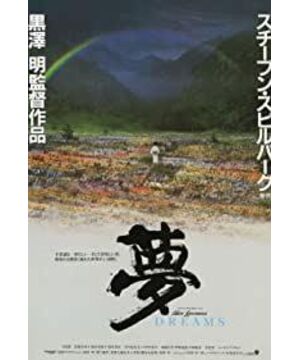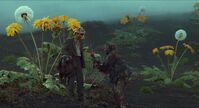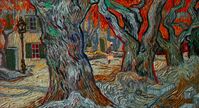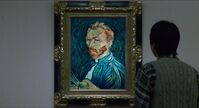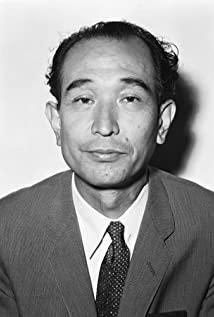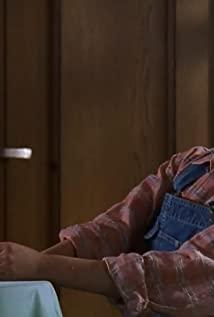The original text was published in the "Time Imaging" section of the Shanghai International Film Festival's official account
-----------------------------------15.MAR.2021
As one of the most important Japanese directors of the 20th century, Akira Kurosawa is known as the "Shakespeare of the film industry". He is also known for a series of excellent films such as "Rashomon" that are well-known overseas. From Akira Kurosawa's autobiography, it can be seen that film works are the "most natural and most appropriate" way for us to understand the director. Published in 1990, the film "Dream" written and directed by Akira Kurosawa is just such a work, which allows us to further understand Akira Kurosawa as a director and an individual.
"Dream" is composed of eight short stories, "Sun Rain", "Peach Forest", "Blizzard", "Tunnel", "Crow", "Fuji Mountain", "Ogre" and "Waterwheel Village", presenting almost all possibilities of human life. All topics covered. Akira Kurosawa also envisioned making this work "the most idealized legendary film" before filming. Carefully dismantling the seemingly independent dreams in "Dream", it is not difficult to get a glimpse of the director's philosophical thinking on life and art, and even Kurosawa Akira's reflection on the fate of the whole human being in his twilight years.
In the first two dream stories of "Sun Rain" and "Peach Forest", Akira Kurosawa showed his personal life experience in an artistic way. In the story of "Sun Rain", the act of peeping at the fox is derived from Japanese folklore and is a personal experience of Akira Kurosawa. The combination of the two is transformed into a dream, and in the form of "peeping", it expresses the theme of the uneducated people's curiosity about privacy and the invasion of natural secrets. The story of "Peach Forest" takes place during the Doll Festival, which is also known as "Girls' Day", and the image of "Peach Forest being cut down" not only visually presents nature's accusation of being destroyed by human economic activities, but also It is a tribute to Akira Kurosawa's memory for the young lady Kurosawa Baidai, who died prematurely due to illness and whose legal name is "Taolin Zhenguang Xinnu". The two dream stories have bright colors and ambiguous meanings with open endings, showing a hidden effect in which the creators avoid directly expressing their truest emotions.
With the development of the dream, the two dream stories of "Blizzard" and "Tunnel" gradually penetrated into the thinking of human society. "Blizzard" undertakes "Peach Forest"'s discussion on the destruction of the natural environment, creating the appearance of human beings showing tenacious willpower when conquering nature. The unknowable ending of the dream shows that it discusses the loss of self in the process of transforming nature. In the next dream of "Tunnel", Akira Kurosawa discussed the damage caused by war and his own view of death in a more abstract metaphor. The dark tunnels connect life and death like a birth canal, creating a visual connection between the two. The "third squad leader" seems to have an unexplained sense of guilt about the continuation of his life, which may be related to a certain public sentiment in Japan after the war.
The fifth dream story "The Raven" expresses Akira Kurosawa's understanding of the essence of art through Van Gogh, who is "equal" to art. This essence is what Van Gogh called "the spirit of the locomotive" in the film, that is, "making artistic creation the life itself of the artist". From staring at Van Gogh's Self-Portrait to entering the painting and talking with Van Gogh, Akira Kurosawa squeezed the gap between the virtual and the real by simulating the scene of the painting, and completed the mirror image of Kurosawa and Van Gogh.
In the two stories of "Mount Fuji" and "Ogre" in the middle section, Akira Kurosawa not only expresses the unscrupulous destruction of the natural environment by people and the inhumane destruction of human material and spiritual civilization by war through the content of the fables, but also expresses the inhumane destruction of human material and spiritual civilization by war. In these two "nightmares", he once again showed his precise grasp of the scene scheduling. Using Akira Kurosawa's iconic mobile photography to capture the actions of characters, it depicts the tragic situation of purgatory on earth. At the same time, the meaning of color in the picture is more and more obvious. The strong contrast between the strong black and red creates a nightmarish feeling of discomfort, in order to criticize the bad behavior of human beings at that time. In the "Waterwheel Village", which is the end of the dream, the picture regains its bright colors, and echoes the mysterious wedding procession of the opening story "Sun Rain" with a cheerful funeral procession. The protagonist Kurosawa, who grew up in the dream, also presented flowers at the funeral according to the village tradition, and returned to the original path to realize the demise of the "self" in the dream mirror image, and complete the closure of the Taoyuan dream.
The film starts with "I had a dream...", and uses "another dream" as the connection between dream stories. It uses the jumping narrative structure and anti-logical narrative techniques to fully express the broken, broken and disordered dream. "Real" nature. Through the unique overlapping of eight dream states, "Dream" declares Akira Kurosawa's criticism of modern people's ignorance of nature's ignorant behavior, and thus sounds a wake-up call for reflection on human existence. At the same time, Akira Kurosawa also depicts an ideal world with artistic techniques, not forgetting to show us the possibility of a harmonious and beautiful future with humanitarian feelings. Looking back at Akira Kurosawa's life from "Dream", he often examines himself in front of the mirror of the movie, "discovering all kinds of unhappiness in the past, and getting scared out of oil", while in future generations, we will borrow director Akira Kurosawa to end his life. The "Toad Sweat Oil" condensed in his life is used to treat and care for the souls of human beings that are gradually lost due to the excessive growth of self-desire.
Some literary and film masters have been creating "the same work" all their lives. Akira Kurosawa is such a director. Although the artistic expression is rich and varied, the purpose of the film has never changed - he insists on exposing the truth of the world and the essence of life through his outstanding artistic talent, so as to influence the ignorant and the ugliness and praise the good and the good. His films are not only messengers of beauty, but also a beacon to guide the lost modern people.
View more about Dreams reviews


